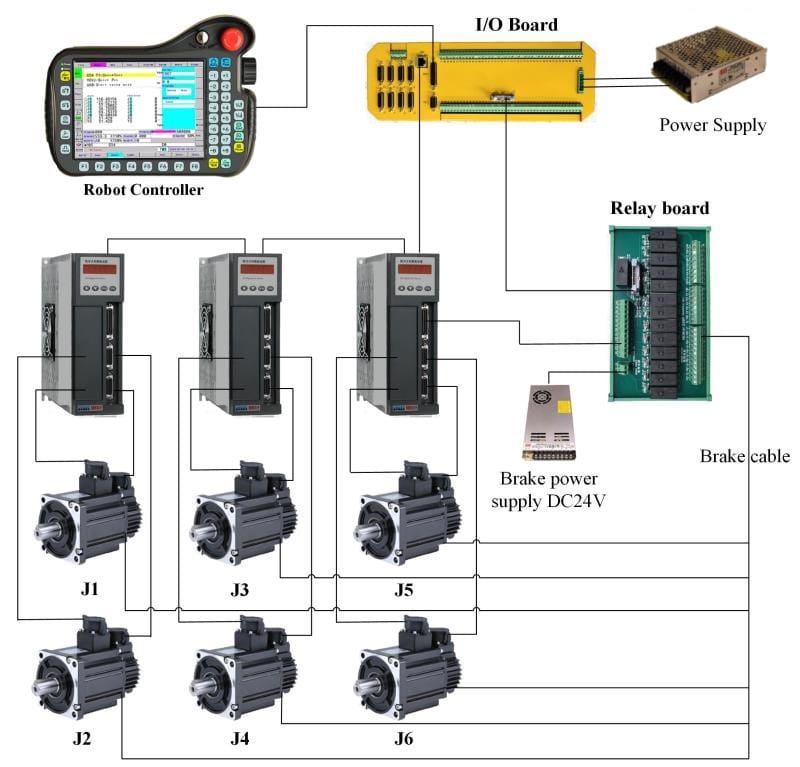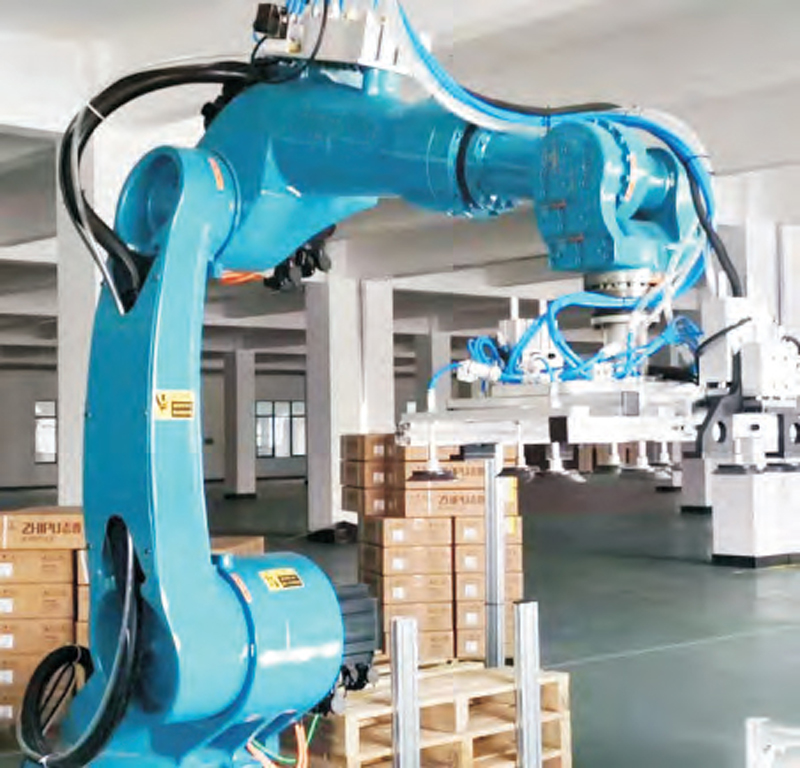Stable 4 Axis Palletizing Industrial Robot Arm For Loading And Unloading
Specification
Axis:4
Max payload:20kg
Repeated location:±0.08mm
Power capacity:3.8kw
Usage environment:0℃-45℃
Installation:ground
Working range: J1:±170°
J2:-40°~+85°
J3:+20° ~-90°
J4:±360°
Max speed: J1:150°/s
J2:149°/s
J3:225°/s
J4:297.5°/s
working range:

base installation:

base installation:

Machinery Test Report:Provided
Warranty of core components:2 Years
Brand Name:NEWKer
Warranty:2 Years
Type:4 axis robot arm

Product Features
• Just a few hours of installing, teaching, debug-ging, the robot can be quickly put into daily production.
• The design is highly compact, flexible installa-tion with ground or inverse position.
• Large workspace, fast running speed, high repeat positioning accuracy, suitable for welding, spraying, loading and unloading handling, sorting, assembly and other wide range of applica tions• Application Field:
Dairy, beverage, food, beer, petrochemical and pharmaceutical production line handling, disassebly, placement, and other aspects of logistics industry;
loading and unloading etc; especially the mass prduction line of loading goods into boxes, bags, and other high volume production lines.
Advantages
High speed, high efficiency, labor saving, small space occupation, easy operation, flexible, low energy consumption.
The difference between a 4-axis robot arm and a 6-axis robot arm
•A 4-axis robotic arm is more stable than a 6-axis robotic arm.
•The procurement cost of a 6-axis articulated robot will be higher than that of a 4-axis robot.
•The 4-axis robot has a fast response speed, and the 6-axis requires more data to be processed by the controller than the 4-axis, so the response speed is not better than that of the 4-axis.
•The difficulty of use is different. The 6-axis robot operating system will be advanced, involving more parameters, more factors to be considered, and higher requirements for the operator's requirements and care.
•The 4-axis robot has higher precision, and each joint is engaged with each other. After the system laser compensation, there will be a certain repeatability error. The more the number of axes, the greater the relative repeatability.



















